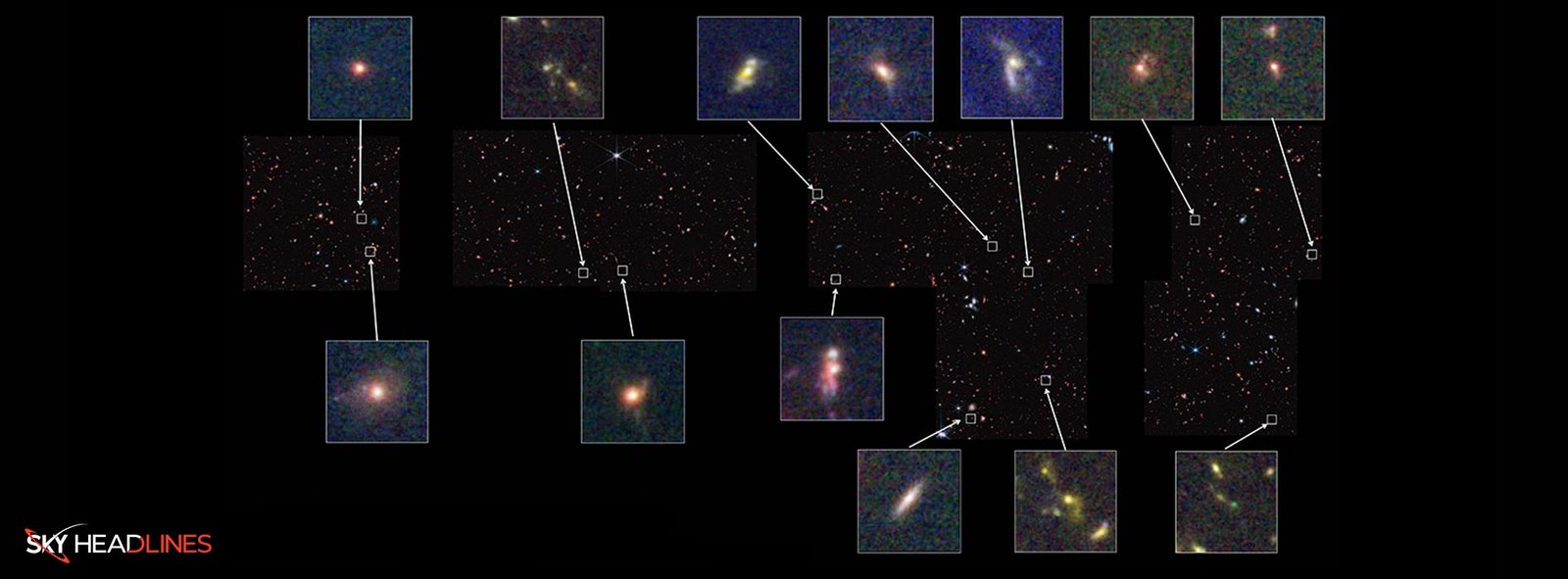Galaxies have evolved significantly in every aspect from the time of early galaxy formation and the present. They have continuously increased their celestial populations while enlarging the cosmic medium with heavy elements, producing multiple generations of stars from molecular gas clouds. James Webb Space Telescope (JWST) discovers that galaxies in the early universe were surprisingly diverse.
According to NASA’s observational study of thousands of galaxies. NASA found that the cosmos is significantly more diversified and developed than previously believed. The study was based on 850 galaxies that were approximately 11–13 billion years old and were spotted at redshifts of z 3–9.
Hubble Deep Field images VS JWST images!
JWST is valuable to Hubble at revealing structures in distant galaxies for two reasons: First, because of its bigger mirror, it has better light-gathering capabilities and can see farther and more clearly. Second, it can see through dust more early universe because it looks at longer infrared wavelengths than Hubble.
On December 28, 1995, 342 different types of images were merged to produce the Hubble Deep Field image. Astronomers claimed to measure the movement, age, and composition of the galaxies photographed by combining these photos.
They claimed that bluer objects may include young stars or be nearby. Older stars may be present in redder objects, or they may be further away. Even the biggest telescopes have never been able to observe most of the galaxies because they are four billion times fainter than the human eye can see.
But as for JWST discovery, Scientists and researchers are now saying that to determine a galaxy’s age and field more time is needed. As the galaxies even at the high redshifts were early universe quite developed.
When the images taken by James Webb Space Telescope (JWST) were compared to Hubble Space Telescope photos that depict the same dim, high redshift galaxies, JWST images are slightly clearer.
What do experts saye arly universe?
A lead author of the new paper and one of the CEERS researchers Jeyhan Kartaltepe also made a statement. He says that even at high redshifts the galaxies were already quite developed. Moreover, she said that the galaxies at high redshifts also had a vast range of structures
Jeyhan Kartaltepe have said that:
“This suggests that we still don’t know when the earliest galactic structures formed,”
Moreover, Jeyhan Kartaltepe concluded:
“We have yet to see the very first galaxies with disks. We will have to study many more galaxies at even higher redshifts to quantify at what point features such as discs were able to form.”
Another researcher who was researching this problem Mr. Jordan Mirocha (Jet Propulsion Laboratory), said:
“There’s either an overabundance of galaxies, or they’re much brighter than our typical models predict,”





